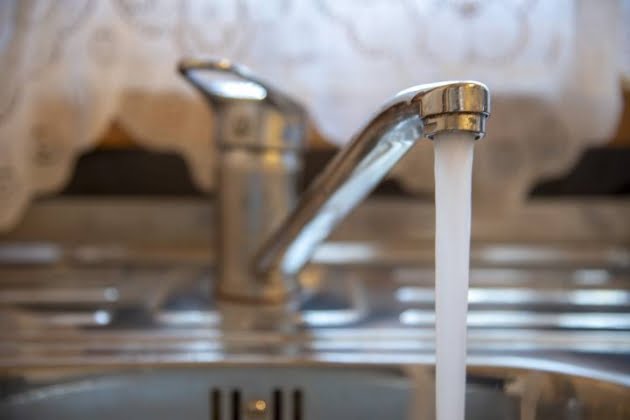The kitchen faucet is a reliable plumbing fixture that works without any complications. You simply turn on the tap, allowing the water to pour out in a vigorous burst. When you are done, rotate the tap in the opposite direction and it should stop the flow. Unfortunately, even the sturdiest faucets will wear down over time. When you have a faulty faucet, its flow of water will become much less reliable.
Some kitchen faucets are slow to turn off. Even though the tap handle indicates that you shut off the faucet, it might still be dripping with water afterwards. This problem is usually caused by malfunctioning faucet parts that aren’t working as intended. In most cases, the faulty faucet will continue to deteriorate in its condition until a plumber fixes the issue.
When a faucet does not turn off immediately, it can be a cause of concern for homeowners. Not only is the dripping a noisy nuisance, but your utility bills will go up due to the excessive water consumption. In severe cases, the faucet won’t turn off at all, which could lead to overflowing sinks and your entire kitchen being flooded.
Before this problem escalates, make sure you inspect the dripping faucet and find out what is wrong. Here are five potential reasons that explain why a kitchen faucet is slow to turn off:
Kitchen faucet handle
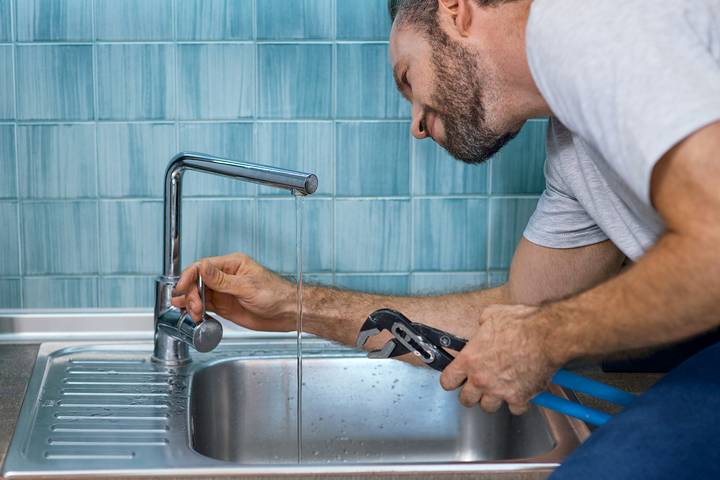
You turn your kitchen sink handle on and off several times a day. Sometimes, it’s a quick slap into position and then you are good to go. If the water continues to run after turning off the faucet, check if the handle is fully closed. The easy fix might be that you just need to reposition your kitchen faucet handle.
If you confirm the faucet is in a closed position, try to turn it further. You may be able to rotate past the off position slightly, which is just what you need to close the water supply. In some cases, however, adjusting the kitchen faucet handle may not have any effect. You might have a faucet handle that doesn’t work properly.
The handle has threads that connect with the faucet stem, allowing you to turn it. These threads can become corroded or stripped over time, which means the handle no longer fully closes off the water supply. The simple solution is to replace the handle. Call a residential plumber to get the kitchen faucet handle repaired quickly.
Kitchen faucet seal

There are four categories of faucets on the market: compression faucets, ball faucets, cartridge faucets, and ceramic disk faucets. In a compression faucet, the washer compresses over an opening to stop the flow of water. This washer component can wear down over time. Since the worn-out washer will not provide a complete seal, the kitchen faucet will begin leaking and dripping.
Other styles of faucets, such as the ball type or the disc type, use plastic components that also wear down with age. Mineral deposits can build up on these parts, causing them to deteriorate and weaken the effectiveness of the seal. These faucet parts will need to be replaced with newer versions.
Corroded valve seat
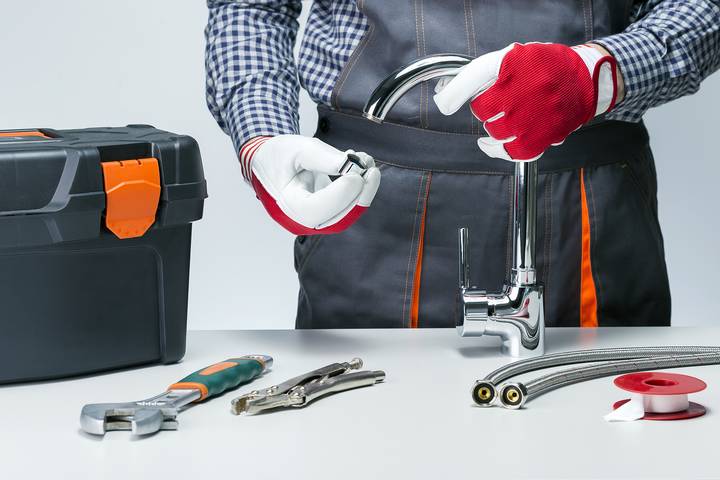
The valve seat is located at the base of the faucet mechanism. With repeated use, this component can wear out gradually. When the valve seat doesn’t work correctly, it may cause the kitchen faucet to drip even after the water is turned off.
Corrosion can aggravate the problem further. Mineral sediments accumulate around the valve seat, eating away at the component over time until it is rendered ineffective. Fortunately, you can replace the valve seat if you have the right tools. A seat wrench is recommended, but a grinder might be required if the valve seat becomes too corroded. Alternatively, contact a plumber to replace this part.
Wrong washer
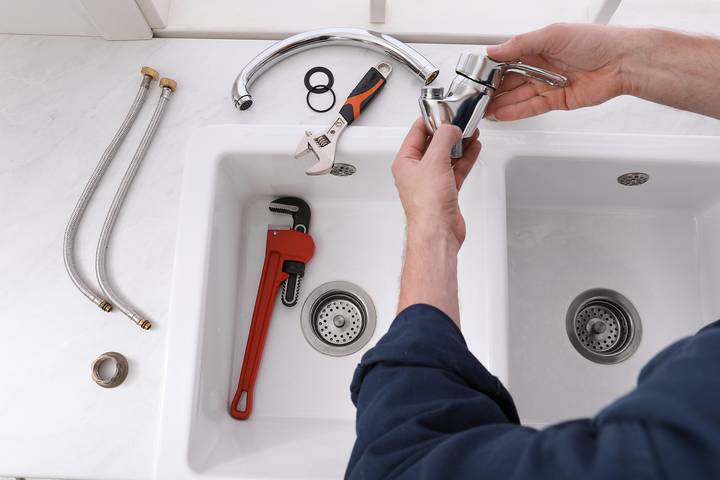
If the water continues to flow after you turned off the kitchen faucet, the problem may be caused by having the wrong washer. Since the washer isn’t the right size, a seal won’t form properly around the faucet. As a result, water will escape it. To diagnose this problem, a plumber may need to take apart the faucet for an inspection. This issue can be cleared up once the washer is replaced with the right size.
Broken cartridge
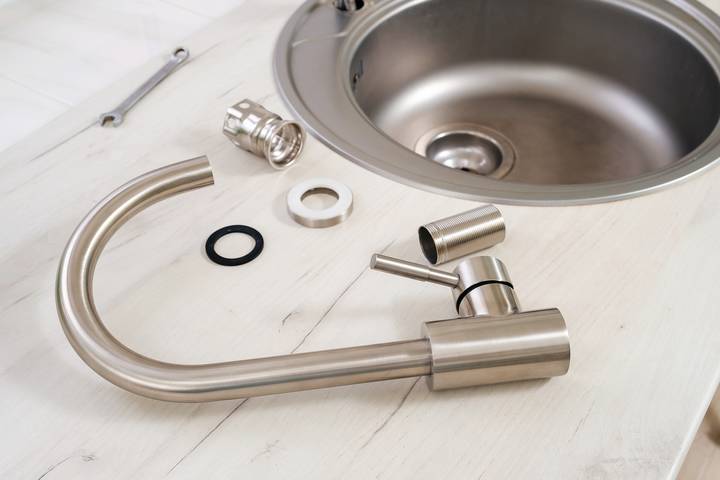
On some kitchen faucets, the cartridge may be broken or defective. This component can become corroded from mineral deposits, wearing out the mechanism and losing its proper function. The cartridge can be replaced by new ones with the help of a professional plumber. You can try doing it yourself, but the process is tricky with springs and seats that must be aligned.
The kitchen faucet cartridges may have one or more O-rings that may have caused the plumbing troubles. A worn-out ring prevents water from seeping out around the spout. Check this component and replace it to see if that corrects the problem.



